
Pterichthyodes is a genus of antiarch placoderm fishes from the Devonian period. Its fossils have been discovered in Scotland. They were one of the first species recognized for what they were, as their fossils are common in the Old Red Sandstone formation studied by geologists in the early 19th century. Due to their extreme divergence from modern-day fish, they were a puzzle unsolved until Charles Darwin brought forward his theories on evolution.

Platybelodon is an extinct genus of large herbivorous proboscidean mammals related to modern-day elephants, placed in the "shovel tusker" family Amebelodontidae. Species lived during the middle Miocene Epoch in Africa, Asia and the Caucasus.

Dorling Kindersley Limited is a British multinational publishing company specialising in illustrated reference books for adults and children in 63 languages. It is part of Penguin Random House, a subsidiary of German media conglomerate Bertelsmann. Established in 1974, DK publishes a range of titles in genres including travel, history, geography, science, space, nature, sports, gardening, cookery, parenting and many others. The worldwide CEO of DK is Paul Kelly. DK has offices in New York, Melbourne, London, Munich, New Delhi, Toronto, Madrid, Beijing, and Jiangmen. DK works with licensing partners such as Disney, LEGO, DC Comics, the Royal Horticultural Society, MasterChef, and the Smithsonian Institution. DK has commissioned authors such as Mary Berry, Monty Don, Robert Winston, Huw Richards, and Steve Mould for a range of books.
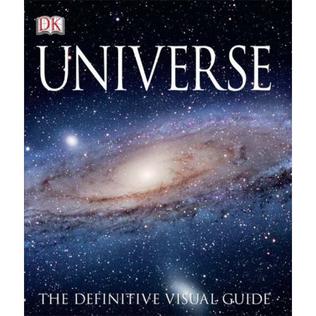
Universe: The Definitive Visual Guide is a 528-page, non-fiction book by nine British co-authors with a short Foreword by Sir Martin Rees, first published in 2005.
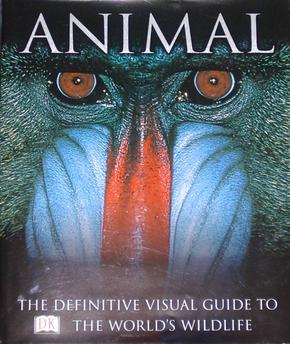
Animal is a non-fiction coffee table book edited by David Burnie, who was the main-editor, and several co-authors. The full title of the book is: Animal: The Definitive Visual Guide to The World's WildLife. The 624-page book was published by Dorling Kindersley in 2001. The book is printed in full gloss paper and has numerous, full-color pictures.

Noeggerathiales is a now-extinct order of vascular plants. The fossil range of the order extends from the Upper Carboniferous to the upper Permian (Lopingian). Noeggerathiales have been previously linked to horsetails and ferns, but are currently believed to be progymnosperms, being woody like seed plants, but still producing spores rather than seeds. Noeggerathiales had a tree fern like appearance, with leaves sprouting from the top of an unbranched trunk. They were primarily confined to the wet tropical regions where there was no frost. Noeggerathiales are rare in European and North American floras, but are common components of Cathaysian Chinese floras.
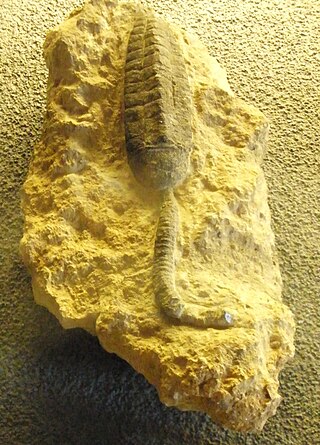
Cupressocrinites is an extinct genus of crinoids from the Middle to Late Devonian of Asia, Australia, Europe, Morocco, and North America.

Cylindroteuthis is a genus of belemnite that lived from the Early Jurassic to the Early Cretaceous. Its fossils have been found in Asia, Europe, North America, and New Zealand.
The Children's Illustrated Encyclopedia is an encyclopedia marketed for use by children ages 7-17. The single-volume work emphasizes visuals like illustrations, photographs, maps, and timelines over breadth of coverage, and entries are supplemented by an official website and URLs to third party resources. It is in its seventh edition, published since 2010 by Dorling Kindersley. It was shortlisted for a 2001 Blue Peter Book Award in the "Best Book of Knowledge" category.
Eyewitness Books is a series of educational nonfiction books. They were first published in Great Britain by Dorling Kindersley in 1988. The series now has over 160 titles on a variety of subjects, such as dinosaurs, Ancient Egypt, flags, chemistry, music, the solar system, film, and William Shakespeare. According to Dorling Kindersley, over 50 million copies have been sold in 36 languages.

Sciadophyton is a morphotaxon of lower Devonian plants known only from compression fossils. It is interpreted as the monoicous gametophyte of a vascular land plant, because its vascularised branches end in a cup-shaped structure bearing gametangia, both antheridia and archegonia, but little structural information is preserved at the cellular level. It formed rosettes of stems, which may have radiated from a basal gametophytic corm-like thallus or from a central 'stem' or even from a root system, although there is not enough evidence to discriminate between these possibilities.
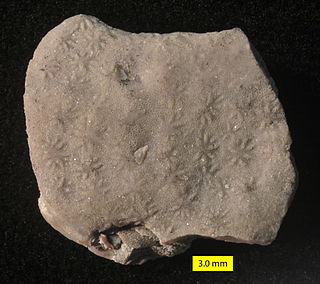
Constellaria is an extinct genus of bryozoan from the Middle Ordovician to Early Silurian from North America, Asia and Europe. These branching coral-like bryozoans formed bushy colonies 10-15 mm across on the seabed. The fairly thick branches were erect, often compressed in one direction, and covered with distinctive tiny, star-shaped mounds called maculae or monticules. Feeding zoids were located along the rays of the stars. The maculae probably formed "chimneys" for the expulsion of exhalant feeding currents from the surface of a colony, after water had been filtered to obtain food for the organisms.

Sphenopteris is a genus of seed ferns containing the foliage of various extinct plants, ranging from the Devonian to Late Cretaceous. One species, S. höninghausi, was transferred to the genus Crossotheca in 1911.

Isastrea is an extinct genus of corals that lived during the Jurassic and Cretaceous periods. Its fossils have been found in Europe, Africa, North America, Asia and South America.
Hexagonocaulon is an extinct genus of bryophyte that lived during the Middle Triassic. Its fossils have been found throughout the Southern Hemisphere, including the Antarctic Peninsula.

Encrinus is an extinct genus of crinoids, and "one of the most famous". It lived during the Late Silurian-Late Triassic, and its fossils have been found in Europe.
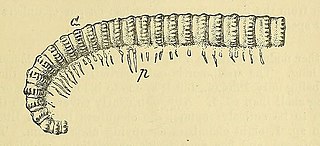
Xyloiulus is an extinct genus of millipede that lived during the Late Carboniferous which grew up to 2.25 inches (5.7 cm) in length. Fossils of the animal have been found in North America and Europe. The fossils are typically found in Sigillarian stumps.
Steve Parker is a British science writer of children's and adult's books. He has written more than 300 titles and contributed to or edited another 150.

Cervids are one of the most common wild herbivores of the world. Of these moose can grow up to 2.33 m tall and weigh as much as 820 kg. The smallest of them all is the northern pudu.













